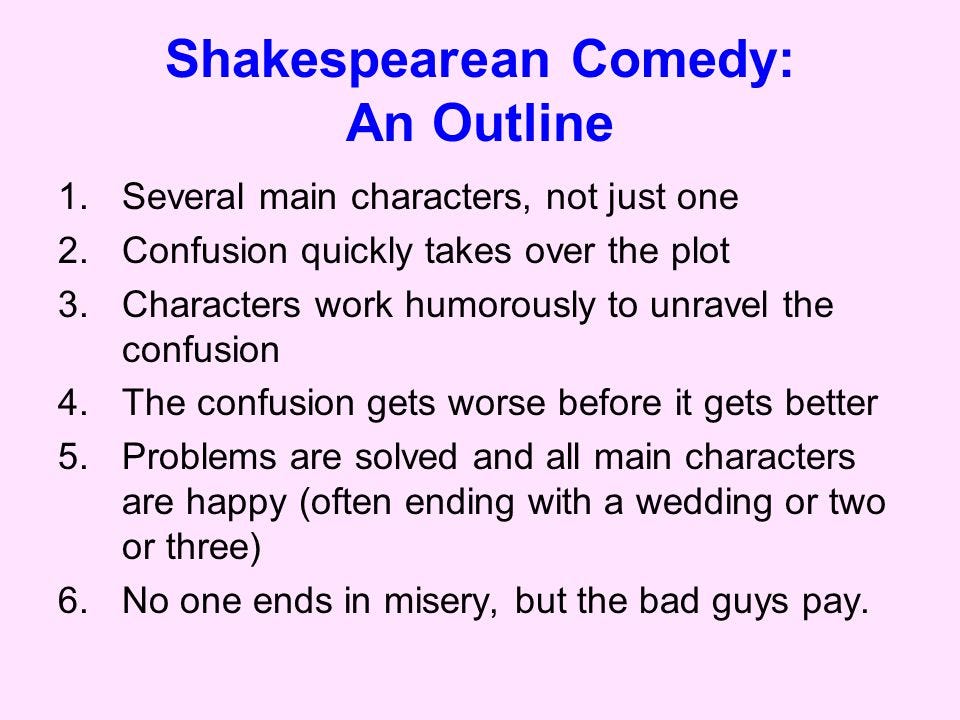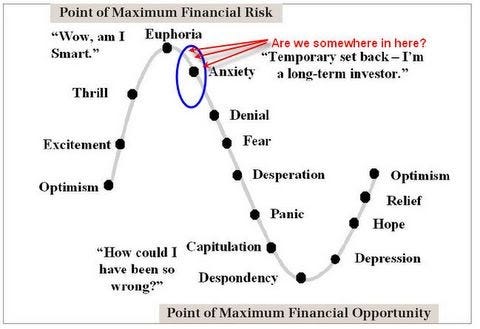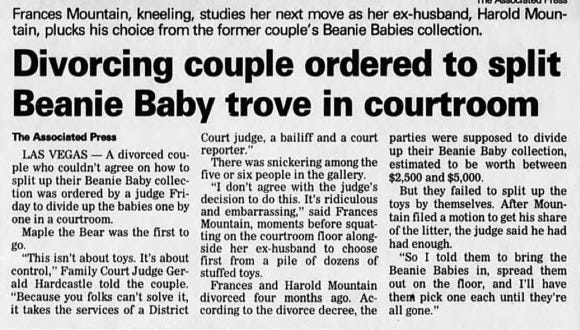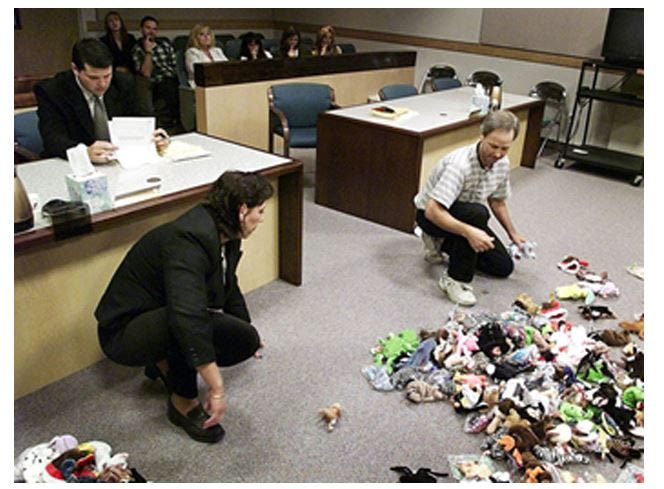Happy New Year or as the Dutch say Gelukkig Nieuwjaar!
I don’t know about you but I am feeling Twenty-Twenty-Two!
This months edition features two topics
Forget resolutions, focus on mastery (6 minute read)
Beanie Baby Bubble (2 minute read)
THE FUTURE AIN’T WHAT IT USED TO BE
Do you realize twenty years from now is 2042?
2042 feels distant yet oddly within reach.
How old will you be? Knowable, but something you may not want to think about.
What will the world look like? Both knowable and unknowable.
What will become of your life? Both controllable and uncontrollable.
The turn of the calendar is a time of new beginnings. The top 3 most common New Year’s resolutions are:
Lose Weight
Exercise More
Save Money
I don’t make resolutions per se. Instead, I annually try to form a good habit that hopefully compounds into a lifelong skill or new hobby.
The best time to plant a tree was twenty years ago or today. — Chinese Proverb
Time has a tendency to compound and 30 minutes of daily practice of anything can really change your life.
While it sounds innocuous, like papa, time is a rolling stone.
30 minutes a day becomes 3.5 hours a week.
3.5 hours a week turns into 14 hours a month.
14 hours a month equates to a week a year.
To control your future you have to be sensitive to chances others miss. Ideally, you can become the best at what you do. If not refine what you do until this is true. Then opportunity will seek you out and luck becomes your destiny. Repurposed from: Ratlinks - Master and Commander
SLOW DOWN YOU MOVE TOO FAST | YOU HAVE TO MAKE THE MOMENT LAST
A life of mastery is full of iterative education, where learning never stops. A process that will redefine not just your life, but could eventually upend the entire workforce.
Randall Stephenson, former CEO of AT&T, once told his employees that those who don’t spend five to ten hours a week learning online “will obsolete themselves with technology.” He warned, “There is a need to retool yourselves, and you should not expect it to stop.”
One path for growth is the practice of Kaizen, a Japanese term meaning "change for the better" or "continuous improvement."
Kaizen can be practiced in two ways:
Using very small steps to improve a habit, a process, or product
Using very small moments to inspire new products and inventions.
Practicing kaizen can eventually lead to mastery, but how?
At the heart of it, mastery is practice. Mastery is staying on the path. Allowing you to perform a task without making a special effort to think of its separate parts.
The process is simple but not easy. Success rarely happens overnight, on average, it takes more than two months before a new behavior becomes automatic — 66 days to be exact.
On a path to mastery there will be many times when you struggle, but to be a learner, you have to do two things:
Be willing to be a fool
By fool, to be clear, I don’t mean a stupid, unthinking person, but one with the spirit of the medieval fool, the court jester, the carefree fool in the tarot deck who bears the awesome number zero, signifying the fertile void from which all creation springs, the state of emptiness that allows new things to come into being.
Love the plateau
To love the plateau is to love the eternal now, to enjoy the inevitable spurts of progress and the fruits of accomplishment, then serenely to accept the new plateau that waits just beyond them. To love the plateau is to love what is most essential and enduring in your life.
Yet every Zen master will tell you that building a stone wall or washing dishes is essentially no different from formal meditation. The quality of a Zen student’s practice is defined just as much by how he or she sweeps the courtyard as by how he or she sits in meditation. Could we apply this way of thinking to less esoteric situations? Could all of us reclaim the lost hours of our lives by making everything—the commonplace along with the extraordinary—a part of our practice?
Thomas Keller’s 6-point essential philosophy may help take this from concept to practice.
Organization - not just of yourself but also organize others, so you are ready for your tasks and ready to lead.
Efficiency - Build templates and perfect your mise en place to be more efficient and better prepared. Do the heavy-lift once
Critical Feedback - when you notice a mistake learn from and correct it. Embracing criticism is crucial to improving.
Repetition - practice doesn’t make perfect, but it will make you better no matter the discipline. When you can teach someone a skill you know that you have mastered your craft.
Rituals - by setting and finding pleasure in rituals you can establish a sense of calm in even the most mundane task.
Teamwork - understand your team, that people make mistakes but treat everyone with respect and make sure your team is involved and motivated
Success = Ability x Idea
Performance drives success, but when performance can’t be measured, networks drive success; or, to put it simply, your success is not about you - it’s about us.
Your success isn’t about you and your performance; it’s about all of us and how we perceive your performance.
The most successful among us have mastered our networks, using them to achieve a place in the collective consciousness, snapping up valuable real estate in the brains of unlikely people.
Life is about making choices that maximize your happiness. It is up to you if the result is momentary or long-term.
GET IN THE GAME
First, it is essential that you begin with one skill that you can master, and that serves as a foundation for acquiring others. You must avoid at all costs, the idea that you can manage to learn several skills at a time. You need to develop your powers of concentration and understand that trying to multitask will be the death of the process.
Not sure where to begin? Here are a few ideas:
Languages
Get started with computer programming and build a program or website.
Learn a foreign language with the goal to have a 5-minute conversation with a local.
Music is the universal language of mankind. Take up an instrument working towards playing your favorite song.
Games
Download a chess app, in no time you will be playing against those guys in the park
“You have to start with gambits, you have to start with open chess...because that’s how you can learn about tactics. Obviously you have to learn about strategy but...you need to do more...aggressive chess while learning.” —Garry Kasparov
Chess, not your thing? Are you secretly an 80-year-old? Maybe bridge is for you?
Take to the sky! Pilot your own airplane or helicopter.
Smack some balls around. Tennis and golf are popular ways to do that.
Self-expression
Write or journal - It’s amazing how even writing once a month can develop into a habit that helps you finally pen that novel. Did you know there are over 40 editions of RatLinks? This entry is entirely cut together from old editions like a Simpson’s clip show.
Become an Instagram influencer. On the internet, anyone can be famous and get #brands to send them free stuff
Show off your artistic side. Beauty is in the eye of the beholder and technically anything can be art.
Become a comedian. With a little effort, you might be able to have a one-hour special, while it sounds hard, remember Netflix will buy anything.
Start a new business
Want to open a restaurant? Thirty percent of your monthly take is going to be your food and wine cost. Thirty percent is going to be labor, 20 percent is miscellaneous, including the rent, and 20 percent is your profit. Your rent per month should be your gross take on your slowest day. And thats it. - Joe Bastianich
TIME IS A FLAT CIRCLE
In summation:
If you are not for yourself, who will be? If I am only for myself, what am I? If not now, when?”
2022 is as close to 2000 as 1978.
Go for it. Live in the moment, stack life skills, be more productive, get washboard abs, don’t drink too much, get along with people, be patient, be kind, take the stairs, get the salad or the hamburger. Live, Laugh, Love.
It’s 2022 so throw out away your ice cream and enjoy some dipping dots because the future is now!
OH BEANIE BABY HOW WAS I SUPPOSED TO KNOW
Beanie Babies were limited edition floppy $5 plush toys created by Ty Warner and his eponymous company Ty which became the dot-com stock of the soccer mom world in the second half of the 1990s.
The loveable Beanie Baby shines a light on human behavior exemplifying how markets expand and bubbles can burst. As Marc Twain said - History never repeats itself, but it does often rhyme.
spotting opportunities
Be contrarian.
It's hard being different or standing out from the crowd. While it can be scary in the moment, in the end, you are betting on yourself.
If you have nothing good to say it may be best to say nothing.
You should never assume the other party shares your view. Your comments can be harmful not only to the person you are discussing but also to the person you are talking to and even yourself.
Focus on supply and demand in every situation.
If demand has increased, but competition (supply) hasn't. That is where you want to be.
blowing bubbles
A focus on supply and demand is important as many markets evolve and destruct in similar patterns.
A primary market develops as the product is discovered by optimistic early adopters who can amass supply at low prices.
By not selling to Wal-Mart or Toys R Us. TY instead sold only to gift stores who refused to discount. Creating a floor price of $5.00 per Beanie Baby
As more people become aware of the product demand begins to outstrip supply. This imbalance creates feedback loops where increasing prices actually create more demand as supply appears more valuable as it becomes scarcer.
“Retiring” select Beanie Babies created artificial scarcity. Some individuals felt the need to hoard plush toys because of their potential future value.
A secondary market arises where players can transact at higher and higher prices.
A primitive official website along with newspaper classifieds created a thriving secondary marketplace for trading beanie babies.
Price discovery and inflationary pricing convince players that prices can only go up.
Monthly magazines touting values became the official bible of Beanie Baby worth. This market information continued to push the floor value higher and higher.
Competitors and new products enter the market creating excess supply. This supply usually enters on a lag often right as demand begins to wane.
Counterfeits and competitors entered the plush doll market eventually taking the euphoria out of the market. With so much new inventory, the long term potential values appeared limited. Causing the bubble to pop or at least deflate
Overpriced markets may have further to go but remember that the potential catalysts we have to worry about most may be the unknown ones.Howard Marks












